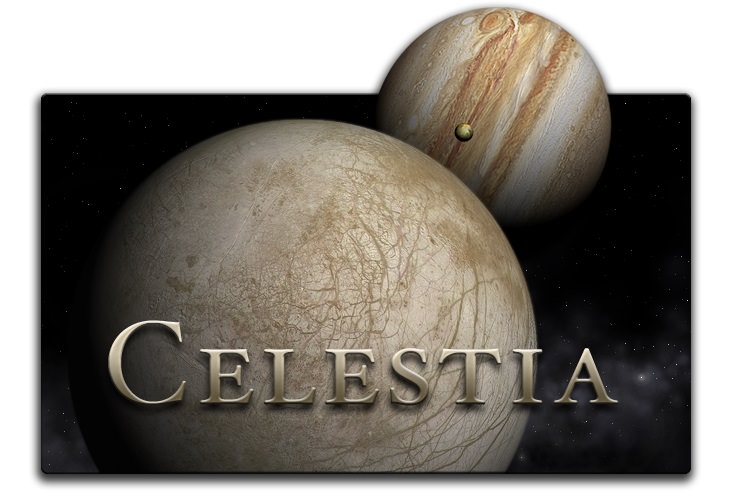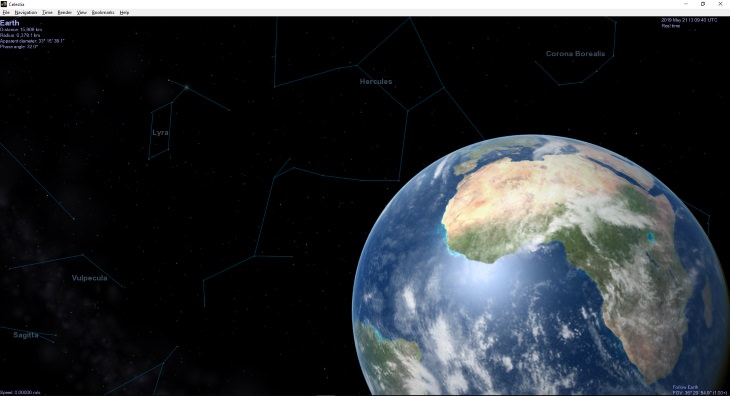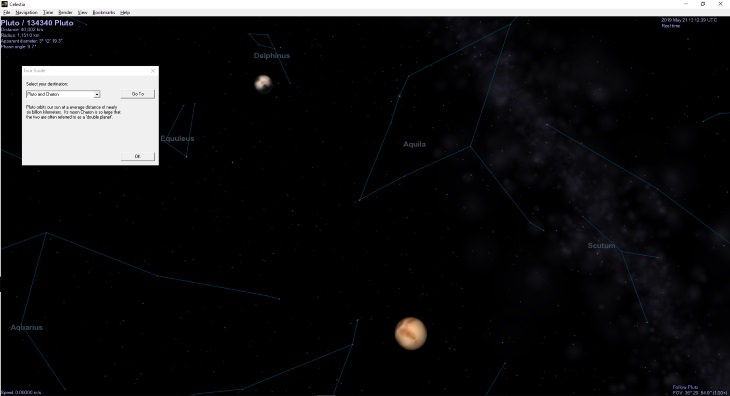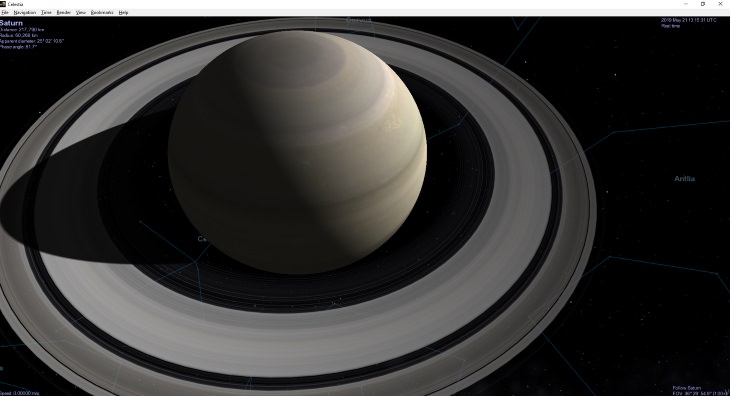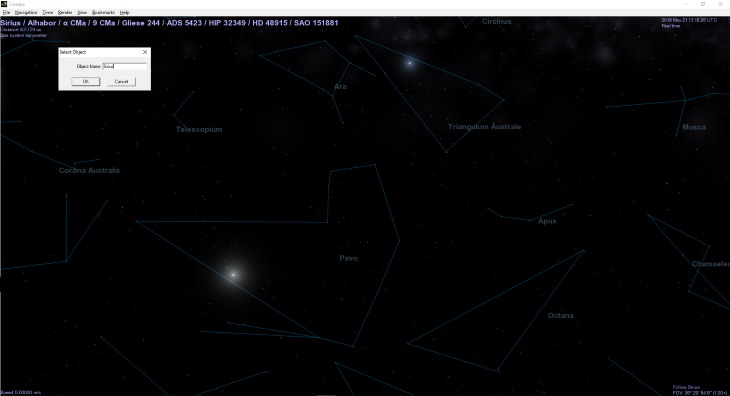How to Install Celestia
The installation process is pretty straightforward. Download the program from here for the operational system you use and install it just like you would any other program (by clicking Run once you open the installation file and agreeing to the terms and conditions). Once finished, launch the program and start exploring.
Navigation Tips
On your first entry, you should see the Earth. Now learn how to travel through the universe:
- Hold the right mouse button and drag your mouse in any direction to orbit around the Earth.
- Holding the left mouse button and dragging it will distance you from the planet, very similar to Google Earth or any other navigation software.
- To zoom in or out, simply roll the mouse wheel up and down respectively. If your mouse doesn’t have a roller, press Home and End keys to zoom in and out.
Going Beyond Earth
Now that you got the navigation basics, you can experiment and try finding familiar planets or constellations in the sky. Once you get the hang of the basic navigation techniques, it's time for you to leave the Earth's orbit, if you haven't already. You have several ways you can start exploring:
1. You can also make use of the Tour Guide feature by clicking on the Navigation window in the top menu and then selecting the Tour Guide section. This is a list of highlights or locations of particular interest which you can quickly access in Celestia and read a short paragraph about it.
To choose a particular destination, click on one of the options and then on the Go To button. We went to see Pluto and Charon in the picture below, for example.
2. Another way you can travel through space, at least to the different planets of the Solar System, is by using the number keys and the G button of your keyboard. The planet’s number is determined by its distance from the Sun, so Earth would be number 3, for instance. We chose Saturn, so we pressed on 6 and then on G, and here we are, right next to the giant himself. Now it's your turn to try.
3. The G button will also help you venture outside of the Solar System. Just find a random star or any other object in the sky, click on it with the left mouse button, and its name and other info will appear on the left upper corner of the screen. To see it up close, simply press G.
By the way, you can learn more about this object by right-clicking on the object and selecting the Info option, which will take you to an online encyclopedia entry about that object. However, we noticed that not all objects have an encyclopedia entry, but many do, and it’s an excellent way to learn more about the different objects beyond Earth.
But what if you want to see a specific object in the universe? To do that, you have to use the Go to object search tool in the Navigation window. Simply type the name of the object, then press on G et voila, it appears right in front of your eyes. We chose the brightest star in the sky, the binary star called Sirius, shown below.
How to Travel In Time
Although the objects in Celestia may seem static to you at first glance, their location in space and in relation to each other is dynamic and changes with time. The default in Celestia is real time, as you will be able to see by looking at the right upper corner of the screen, but you can change that, speeding time up by clicking on K several times and slowing it down by pressing the L button.
You can also make the time go either backward or forward by clicking on the J button.
View and Learn About Constellations
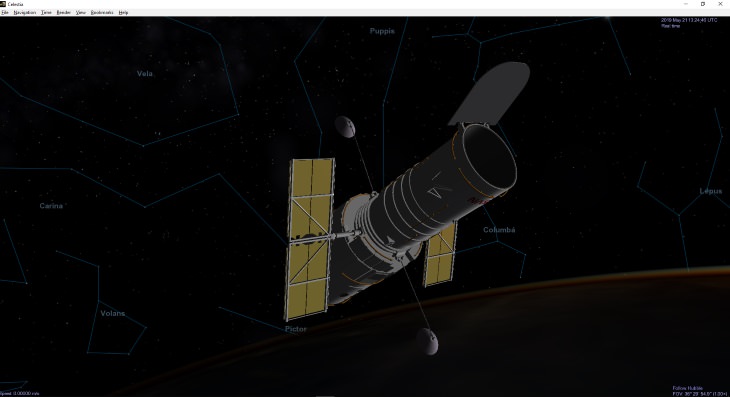
Now let’s return to Earth for a second. To do that, press H, then G, then 3 and then G again. Once you’ve arrived, you can probably start making out some familiar constellations. But even if you don’t, fear not, as you can learn new constellations, how they look and what they’re called, along with their location relative to Earth by simply going to the Render window of the menu, selecting View Options and enabling the Diagrams and Labels options in the Constellations section like we do on the image below.
Once near Earth, you can also try looking for some man-made objects orbiting our planet by right-clicking on the planet and going to Satellites-Spacecraft, selecting an option and pressing G. Above is our screenshot of the Hubble space telescope orbiting the Earth, for example.
Now, there so many other features and interesting objects in this program we could write a whole book about them, but there were the basics to Celestia, and now we invite you to continue exploring the universe on your own, without our guidance. Alternatively, watch this demo video of the program that will give you a gist of what it looks like.

